The long, remarkable life of the Studebaker Avanti
Some time in March 1963, my parents rented a spring break “vacation apartment” in Fort Lauderdale, Florida. I was 9 years old, and my hobby was building car models—AMT models, specifically. Despite my enthusiasm for the endeavor, I wasn’t very talented in the execution. Actually, I was terrible, and if half a tube of glue was called for, you could expect me to use at least two tubes.
We got to Fort Lauderdale for a beach vacation, and it rained. And rained. And rained, which left us close to nothing to do. In those pre-Yelp, pre-Airbnb days, Dad had simply asked the rental agent how close the place was to the water, to which the agent replied, “Just two blocks!” Of course, Dad meant the ocean, not the drainage canal nearby.
With little to do, it was quickly turning into a cheerless vacation. Then my dad rescued it by taking me to a hobby shop. It was there I found the model that would change my life and set me on a path toward enlightenment and endless pride. I really do mean that, but said path was not without some head-scratching, some embarrassment, and a lifetime of explanations.
I bought AMT’s 1:25-scale plastic Studebaker Avanti. More of a spaceship than a car to this 9-year-old, the real Avanti had a futuristic design with an (almost) grille-less front end, snappy 2+2 seating, and a large greenhouse with a back window easily the size of a Triumph TR2. It was made of exotic fiberglass, and it was very fast. The model was the full manifestation of a car from the future, delivered into my hands that day. Within hours, the Avanti and I had a full working relationship, boy and inanimate object, a car that looked to me like a magic portal to the future. My future. And now, almost 60 years on, it truly was that portal.
The 9-year-old me struggled in school, and friends were tough to come by, but I quickly learned that I could take my love of cars everywhere. I could read about them, I could occasionally ride in them, I could endlessly dream about them, and, if I could live through those seemingly 100 years between ages 9 and 16, I might actually be able to drive them. Cars didn’t judge, cars didn’t criticize, cars didn’t tell me what was wrong with me.
The Avanti and I, we bonded. Not just because it, like me, was a bit of an oddball, but because it is so misunderstood. I get that some people think it’s ugly. I understand when people say it was a failure because it didn’t save a 100-year-old company that had been on its death bed even before an ill-advised 1954 merger with Packard. That stuff didn’t matter to me back then, and it matters even less today.
Right around the same time I got my driver’s license, I managed to get my very own Avanti. It was sitting at Sun Motors on Fairfax Drive in Arlington, Virginia. Avanti Gold, a supercharged 1963 four-speed R-2 model with a fawn and elk interior. My boss, a hardened old soul five years my senior, did the negotiations for me, all of which involved enough convoluted horse trading worthy of a Silk Road merchant four centuries prior.
I have since owned well over 100 of them, which makes me just expert enough to run you through the car’s first four generations.
The Studebaker Years, 1963–64
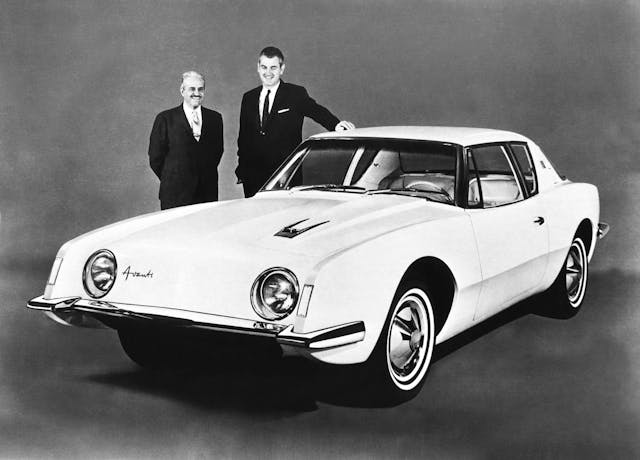
The 1963 Avanti had a 289-cubic-inch Studebaker V-8 as standard and was available in non-supercharged (R-1) and Supercharged models (R-2). The base, and rarely seen, transmission was a three-speed manual; a four-speed manual and a BorgWarner automatic were options. Air conditioning was not available on R-2s, as the Paxton supercharger left no room underhood for an A/C compressor.
All Studebaker Avantis were equipped with Dunlop disc brakes up front and conventional drum brakes in the rear. Options included power steering, power windows, an AM or AM/FM radio (both were rebranded Delco units), tinted glass, left and/or right “Stratovue” exterior mirrors, and a host of other convenience items. All 1963 interiors were two-tone vinyl, with fawn (a light tan) on top and colors such black, turquoise, orange, elk (darker brown), or red below. The carpets were tuxedo “salt and pepper” style (not GM sourced, but similar to those in the C1 Corvette).
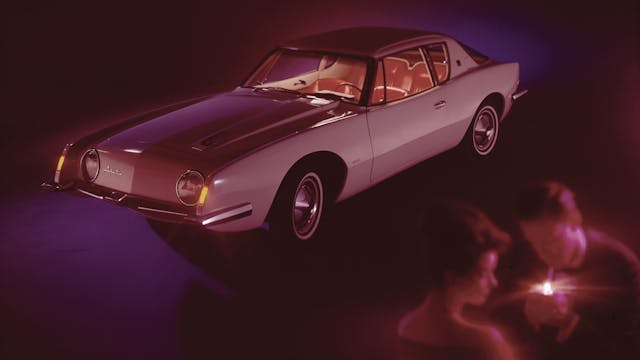
In 1964, a few features were added. The front end received square headlight glass lenses, replacing the previous round lenses. Inside, a tilt steering wheel became an option. The two-tone vinyl interior was changed out for a single color, and the tan painted dashboard and console pieces were replaced with woodgrain vinyl applique. The tan steering wheel also became a brown woodgrain. The bucket seats, lightly disguised copies of Alfa Romeo buckets, got thicker seat backs in last few hundred cars.
An R-3 engine was also added, but only for the last nine cars off the assembly line, in December 1963. The R-3 was bored out slightly, and the Carter AFB carburetor was enclosed in an airbox for better performance. A rumored twin-carbureted R-4 never made it to production.
Getting further into the weeds, running changes on the production line actually gave us some “1963½” models, which featured a 1964-style interior with 1963-style round headlights. Perhaps even more obscure are the cars that were sent to Nevada for something called the “Las Vegas Driveaway.” Those cars, slated to have vinyl applique on the dash and console, instead featured black paint. The rumor is that heat + early vinyl = excessive peeling, so the move was made to avoid angry customers.
Such is the nature of small-volume production, few Avantis from this era are exact duplicates. With six exterior colors offered (including different formulas for red between 1963 and ’64), and nearly endless option combinations, the cars were all semi-personalized. The total number of Studebaker Avanti cars built is generally agreed to be 4643. How many remain is unclear, but my best guess is “somewhat fewer than 3000—perhaps 2600?” Though they are not completely immune to rust, the fiberglass bodies have helped with attrition rates, and the Avanti was always regarded as a “special” car, even when new.
The RQA Avanti II Years, 1965–69
When Studebaker closed its factory in South Bend, Indiana, in December 1963, the Avanti was one of the casualties. Enter two South Bend car dealers, Leo Newman and Nate Altman. The duo bought production rights and much of the parts supply for the Avanti and moved manufacturing to one of the former Studebaker South Bend interior finish buildings. A matter of months later, the Avanti II emerged.
Gone was the distinctive rake to the front end, thanks to a slightly taller new General Motors powerplant. These are known as the RQA cars because of the prefix to their serial numbers, as in RQA-0XX. They were essentially 1964 Avantis, now totally handbuilt, with a Chevrolet 327 V-8 for power. I’m a big fan of the earliest Avanti IIs. Make mine an air-conditioned four-speed with the available 350 horses, please.
The Avanti II quickly became a highly personalized car, as you could order an unlimited combination of paint colors and interior fabric choices. A Grecian Bronze exterior with a marbled blue vinyl interior? Not a problem. Would you like red carpets with that? Despite some outliers, most Avanti IIs were tastefully done, and those that survive tend to be bargains. It really is a lot of car for the money.
The RQB Avanti II Years, 1970–82
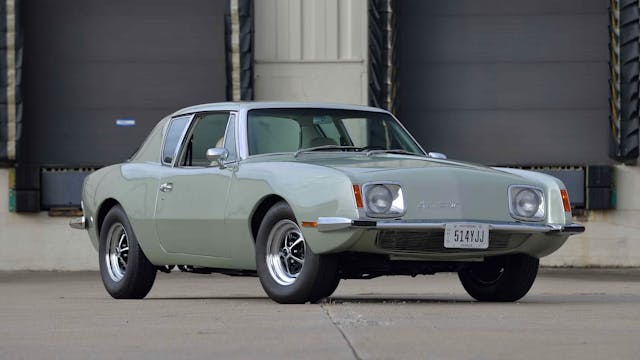
The later RQB cars (again, because of their s/n prefix) are easy to spot thanks to their high-back bucket seats with built-in headrests. As time went by, not surprisingly, the Avanti became more luxurious and lost some of its performance edge. The 327 V-8 was replaced by a 350-cubic-inch GM unit, with a 400 also available in some years.
Increasingly, leather replaced vinyl in the seats, door panels, and trim. The AM/FM radio sprouted a cassette deck or 8-track player. Sunroofs became the norm. The carpeting, once like every other 1960s car, grew a deeper pile, and in some cases, turned shag. After Nate Altman’s death, his brother Arnold took on much of the day-to-day activity of running a small automobile company in the 1970s. The challenges of being America’s fifth or sixth largest (remember Checker and Excalibur?) automobile company were close to legendary. Payroll had to be made, government regulations had to be addressed, and a once-seemingly endless but now dwindling supply of parts had to be procured—at ever increasingly expensive costs. Avanti needed its next savior.
The Steve Blake Years, 1983–85
Washington D.C. real estate developer Steve Blake had been in purchase talks with Leo Newman and Arnold Altman for some time. On October 1, 1982, the transfer of ownership became final.
The first “Blake Avantis” were 1983 models. Steve was a personal friend, and his outgoing nature and vociferous personality made him a true one-of-a-kind. His Avanti vision, never fully executed, was to make an American version of the Porsche 911—an ever-evolving, ever-improving performance and luxury brand.
The costly blade-style chrome bumpers were replaced for 1984 with Kevlar-reinforced fiberglass units, and the change was dramatic. Blake hired chassis engineers, started a racing program, fitted the cars with 305-cubic-inch L69 Camaro V-8s, and used public relations and a touch of advertising in an effort to make the Avanti look and drive fresh in the 1980s. A convertible version was launched for model year 1985, and three production cars were actually built. Despite increasing sales, and plagued by paint problems, Avanti closed its doors for the first, but not the last, time in early 1986.
Although the original Avanti lived on in many forms and with an increasingly interesting list of owners, the original chassis—a Studebaker unit that traced its roots to the 1950s—was in production from 1963 to 1985. Love it or hate it, the Avanti was an American icon of the late mid-century.
What they’re worth now
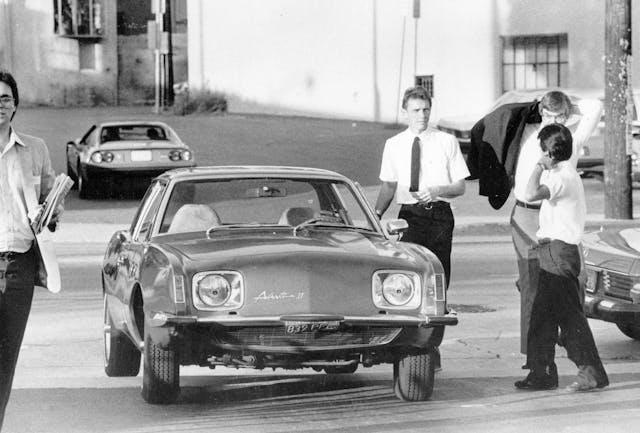
Early Avantis, particularly the ultra-rare ’64 R-3, remain the most coveted of the marque. The Studebaker R-1 and R-2 are both worth more than double the Avanti II models, which represent excellent entry points into the Avanti world. That said, we are seeing renewed interest in early Avanti II cars, as well as Blake 1983–85 cars. Interest in all Avanti generations skews heavily toward baby boomers, though our quote data shows Gen X drawn to the early cars, while later cars have garnered a significant amount of attention with Gen Z.
The Avanti’s trajectory is strikingly similar to that of the Cord 810/812: the last dying effort of a dying Indiana car manufacturer, available in naturally aspirated or supercharged form, sporty and fast, with styling that was initially polarizing but no longer looks out of place.
I still have fond memories of that rainy Fort Lauderdale vacation half a century ago, and I’ve never spent too much time wondering how my life would be different if I had picked up a Mercedes 300SL roadster model instead of the Avanti. We were pals, the Avanti and me, and we still are.
***
Check out the Hagerty Media homepage so you don’t miss a single story, or better yet, bookmark it. To get our best stories delivered right to your inbox, subscribe to our newsletters.
Via Insider

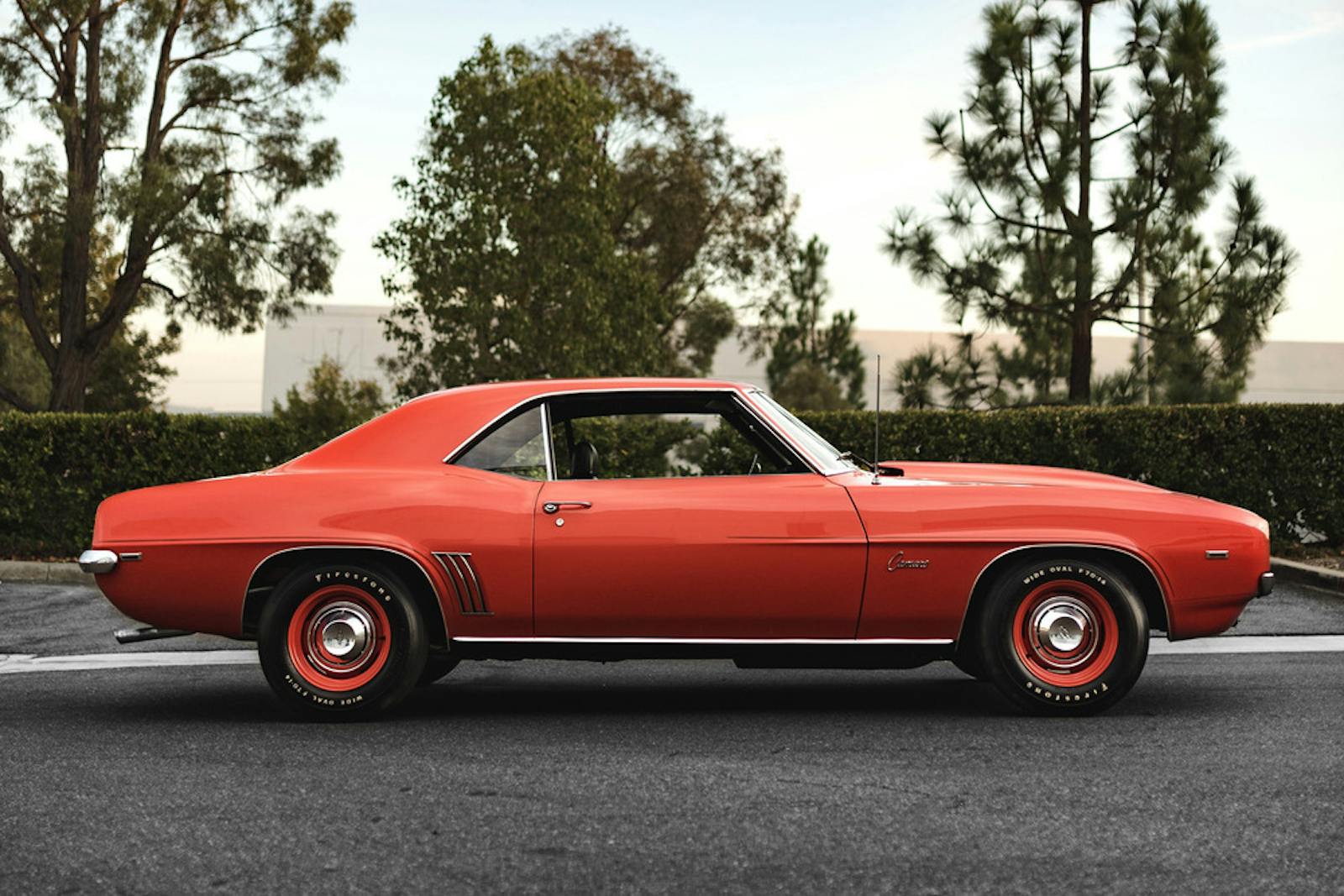

I have always loved these unique cars.
Your article’s Avanti history is quite thorough, but why leave Raymond Loewy out?
Also, what does “Stratovue” exterior mirrors mean, and why aren’t they shown in some of the photos?
Yours is an enviable experience.
Agreed! Where’s the mentioned of famed industrial designer Raymond Loewy? A critical omission.
Some of my friends ridiculed the Avanti when it came out, but I have always liked them and wish I’d run across one that could have been added to my experience. Interesting read!
The design was a bit odd for its birth era.
If the lines and proportions could be maintained and still meet today’s laws… it would be a sharp looking car.
Who knows… 10 years ago nobody would have guessed VW was going to make Scouts…
I thoroughly enjoyed your Avanti History article! In 1963 I was 17 and just got my driver’s license. I saw my first Avanti at the New York Auto show, probably the year previous.
I was infatuated with it instantly. Fast forward 50 years, I was able to acquire a 1963 R2 four speed (#4024) in great condition.
It didn’t disappoint. I would rather drive the Avanti than my first generation Dodge Viper!
Great article about a great car. One small correction: the S-P merger was in 1954, not 1958. ‘58 was the year of the final “Packardbaker” and the Packard brand, though the Studebaker-Packard corporate name continued through ‘62.
It is inexplicable to me how the article omits the Michael Kelly and John Cafaro ownership segments that continued production to 1991. Including a four-door and a convertible under Cafaro. Or the later reincarnation, again by Michael Kelly, for the redesigned Avanti produced from 2000 to 2007. And as a nitpick, the dash parts were not changed to vinyl, but to Tenite, which is very different.
As a high school student I would get off the bus and just stare in the dealership and say one day I’m getting this car! “Avanti”! Well, after marriage and college I was test driving a Jaguar. Then it hit me! This is not the car I always wanted! So, after taking the Jag.back. I bought my car!,with my first N.F.L. contract 1970 Avnti II. That’s been 53 years ago! Still smiling and everytime I open my garage door!
The Avanti Was a Fantastic Love Affair 💘for 19yrs 1964 R1.4658..I am still kicking myself,for selling it 8years ago..
Hey. About the Las Vegas Driveaway rumour… I have a Stude Avanti R2 4-speed. Avanti Grey, Electric Red interior, Red Black tuxeco carpet 1963. The car has a Fawn vinyl dashboard, etc. All original.
Manufacturer’s report reads: Tag: Las Vegas Driveaway. (one hundred cars delivered to Las Vegas. Near Stardust Casino). She was then delivered from there to Santa Ana. No changes for “normal” version.
No mention of Tom Kellogg either!
Great story! Still a beautiful car. I’ve never owned or even driven one but they always get my attention.
I built that same AMT model of which the author wrote and adored that car though I rarely ever saw any in real life. Still think it would make a great production vehicle to this day. Thanks for this story!
My Dad and his Partner got Studebaker in 1959. I also built AMT models ! I was 7 at the time. Early 60s Studebaker brought an Avanti to each dealer to drive! I know own 64 with a Super Charger and a 2 dr 4speed Lark.
Duncan imports.com! I loved this story! Gary Duncan 540 230 0077 cell
My father bought an Avanti in 1964. It was the talk of the town and he was known as “the profesor with the coolest car” even in the early 70’s (he taught Optometry at Pacific U. in Forest Grove, OR). He kept it running until shortly before he passed in 1984. My brother inherited it but was never able to really get it running again. I remember going *very* fast in it, occasionally!
I presently own a 1963 Avanti in #3 condition and a 1991 Avanti convertible. I too wonder why you didn’t continue through the 2007 Avanti with your story. Great read and my ’63 is very fun to drive and the ’91 is the kind of luxury you would expect from a car with such a unique heritage.
I remember the first time I viewed an AVANTI in Milwaukee Wi. parked in front of a local furniture store. The avanti gold with fawn interior “dream car” that sparked a life long passion in this then 13-year old continued until many years later I found my “dream” come true at the Brookfield Wi. AOAI meet, when the son of the cars original owner wanted to post a (for sale) notice. Two days later I was the 2nd owner of a one family owned original R2 #4250 AVANTI! And the “dream” is now a reality!